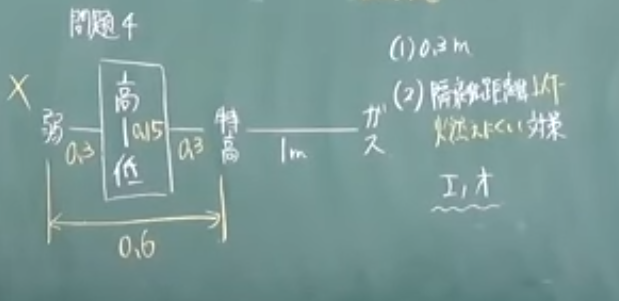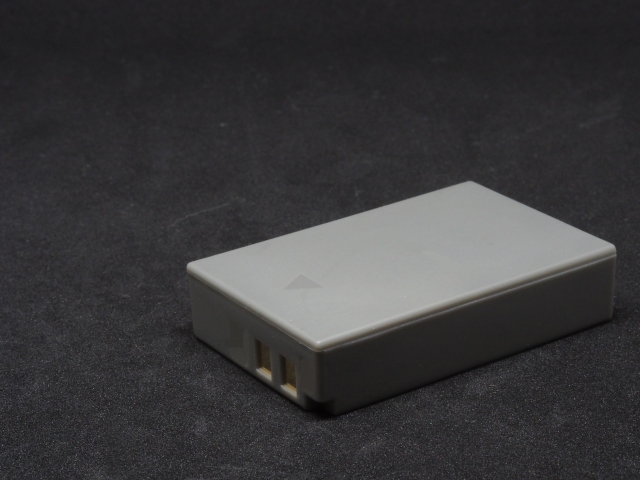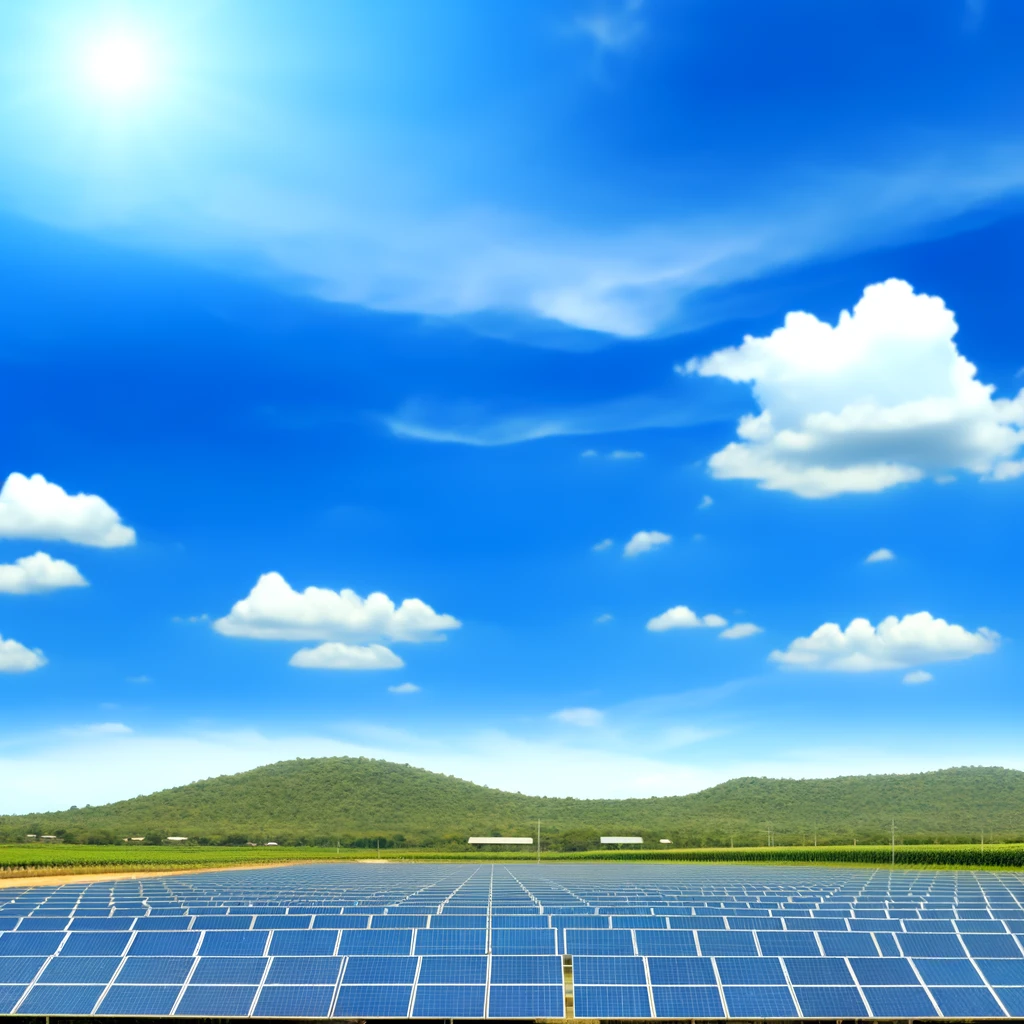翻訳
hello everyone and welcome if you have
two vehicles and one is getting 20 miles
per gallon while the other is getting 30
miles per gallon
which one has the more efficient engine
well if you pick
either of these answers you could be
wrong if it
is a moped that's only getting 30 miles
per gallon
then it probably doesn't have a very
efficient engine and if it were a semi
truck that was somehow getting
20 miles per gallon well then it has an
insanely efficient engine
so using mpg is not a way of comparing
engine efficiency and the way you
compare efficiency is looking at
brake specific fuel consumption so what
is brake specific
fuel consumption well it's simply your
mass flow rate of your fuel
divided by how much power you're making
in other words if you were to take an
engine dyno
and you hook up the engine to it and you
measured how much fuel is flowing
into that engine per second you divide
that by how much power are you actually
making in that moment
and that gives you your brake specific
fuel consumption so it's the great
equalizer
it doesn't matter if your engine is
small large it doesn't matter if it's
turbocharged naturally aspirated
what you're looking at with a certain
amount of fuel
how much power can you make with that
fuel and so you know this a great
example of this in the real world is
looking at
formula one cars so formula one cars
have different horsepowers right
but they're all limited in how much fuel
they can put into the engine
their maximum flow rate of fuel that can
go into that engine
is a hundred kilograms per hour however
if they're able to make more power with
that specific amount of fuel
they have a more efficient engine thus
they are making more power and thus they
have a strategic advantage
so it's a way of comparing efficiency by
looking at how much fuel is going in
versus how much power is coming out so
what are the units of brake specific
fuel consumption
and how do we know how efficient an
engine is based on this number
so we're looking at a mass flow rate in
other words grams per hour
divided by power in this example using
kilowatts as power so if you take that
grams per hour the hour goes to the
bottom
and then you have grams per kilowatt
hour which
gives you your efficiency this is the
common way that brake specific fuel
consumption is discussed a certain
number
of grams per kilowatt hour now to many
of us we don't use grams per kilowatt
hour as a frequent unit and we
are more familiar with efficiency as a
percentage 50
efficient 75 percent efficient things
like that so how does this number
translate into an efficiency percentage
well efficiency is output over input
in this example we have the inverse of
our break specific fuel consumption
divided by the heating value and now
you're wondering well what's the heating
value
well this book does a very good job this
thurber like dynamics book does a very
good job of defining
heating value so i'm simply going to
recite that the amount of heat released
when a unit amount of fuel at room
temperature
is completely burned and the combustion
products
are cooled to the room temperature so
what does that mean well look at our
combustion chamber right here so we have
air and fuel going in we have one
kilogram of fuel going in at 25 degrees
c
we have air going in at 25 degrees c we
mix all that up and we combust it
and then we measure the amount of heat
released from this combustion chamber
when all of the byproducts then leave at
the same temperature
that they entered at so all of our
exhaust is leaving at 25 degrees c
which of course is unrealistic that
doesn't happen with combustion engines
but all of that energy is lost as heat
and we measure how much
total energy came from that one kilogram
of fuel
and it turns out that number for
gasoline pure gasoline not the like
ethanol mixes that we use pure gasoline
around 44
000 kilojoules per kilogram in other
words
about .0122 kilowatt hours
per gram so when we go back to our
equation here what you can see is if you
take the inverse of your break specific
fuel consumption
essentially what you're looking at is
how much youthful work
did we get out of that one gram of fuel
and then
we're dividing that by how much energy
does that one gram of fuel actually have
in it and so as an example we can look
at
uh you know an engine might have a brake
specific fuel consumption
of 300 grams per kilowatt hour well one
divided by 300
divided by our 0.0122 kilowatt hours per
gram
that will give us an efficiency of
around 27
a really efficient gasoline engine might
have something like 225 grams per
kilowatt hour for its break specific
fuel consumption
and that will give you a efficiency of
about 36 percent
now a common way of visualizing brake
specific fuel consumption is to look at
a brake specific fuel consumption map
versus your torque and versus your rpm
so essentially torque here could be your
engine load as a percentage from zero
percent to 100
or looking at your brake mean effective
pressure we're labeling it here as
torque so
when you're at these higher torque
values that means your wide open
throttle at these
lower torque values you have a very
restricted throttle
so you're not letting much air pass
through and so here on the bottom we
simply have rpm low rpm
all the way up to high rpm and you can
see these little islands on this plot
with different colors
and so these islands represent
efficiency zones so within this tiny
little island right here
this is our most efficient zone where
our brake specific
fuel consumption is just 200 grams per
kilowatt hour
and then as you go out 250 300 all the
way to 450
uh grams per kilowatt hour so you want
your engine to always be operating and
it's most efficient of a region
as possible so in this case it's
somewhere in the lower ish rpm zone
with a higher ish torque and then as you
go out from that as you go to higher
rpms or
or lower torque values you can see your
brake specific fuel consumption goes
down meaning the amount of fuel required
to make an amount of horsepower
increases so why would this region you
know
low rpm low torque not be very efficient
well you've got
high pumping losses because your
throttle is almost closed
and you have more time for heat losses
because you're at a really low rpm
so your pistons aren't moving that fast
there's more time for that heat to
escape to those
cylinder walls versus if you get to a
really high rpm
well now you've got really high friction
losses and you also have high pumping
losses so a really inefficient zone
and then as you get up into these higher
rpm higher torque regions
well then you start to use a richer air
fuel mixture that's great for making
power
but it is not very efficient and then
you also of course
have those high friction losses so the
sweet zone
is somewhere where you have your
throttle uh fairly wide open
um you know not completely but but a
good amount of
load on the engine and your rpm is not
that high so if you take a look at a
plot of
rpm versus brake specific fuel
consumption there's some sweet zone
right too high too much friction losses
too low too much heat losses through
those cylinder walls there's some sweet
zone there and then you can shift this
plot up or down
depending on the compression ratio so if
you use a higher compression ratio
you shift that down meaning you're using
less fuel to make a certain amount of
power your engine is more efficient
you want your brake specific fuel
consumption as low as possible
if you look at brake specific fuel
consumption versus your air fuel ratio
well if you start to go too rich well
then you're just wasting fuel right
there's
more fuel in that cylinder than can
actually be burned so that's just
leaving
out the exhaust and you're not getting
an efficiency benefit from that but
there is a power benefit to doing so
if you go really lean well then you may
not be able to burn all of the fuel
injected into that engine
so that's also going to be wasteful not
going to be super efficient
now that doesn't account for all
combustion strategies out there there
are some efficient
lean combustion strategies out there but
just as a general rule of thumb
you know somewhere close to
stoichiometric you're going to have
really efficient combustion
and then looking back at this now we can
kind of look at
well what about if we were to just be
driving along
at 55 miles per hour right if you're
driving along at 55 miles per hour you
could choose
hey which gear do i want to be in uh you
could be
in sixth gear which might put you
somewhere around right there you could
be in fifth gear
which could put you somewhere around
right there fourth gear
third gear or second gear and so all of
these are making the exact
same amount of horsepower you're at a
low load at a higher rpm
makes a certain amount of horsepower
let's say you know it's 30 horsepower
that you're making
as you're cruising down that highway
same amount of power in third gear same
amount of power in fourth gear it's just
your trading
load for rpm right and so you have these
constant power lines
that will come kind of across like that
and what you can see is
if you're operating in sixth gear
meaning a low rpm
and a fairly high engine load it's much
more efficient it's within this really
efficient zone
and so as a result you will get better
fuel economy
now if your car has an mpg readout you
can actually get a tiny glimpse into
what your brake specific fuel
consumption map
actually looks like by holding a
constant speed and then changing gears
i've done this in my crosstrek and what
you'll notice is that as
i go from second to third to fourth to
fifth gear
while driving at a constant speed rpm of
course drops with each
increasing gear engine load increases
with each gear
and because this puts the engine at a
higher load with a lower rpm
putting in a more efficient spot on the
brake specific fuel consumption map
i get better fuel economy very neat to
see it in the real world
now if you start looking at the brake
specific fuel consumption of various
engines
out there what you'll notice is some of
the most efficient engines out there are
massive
so why is it that these massive engines
are so efficient and so if you look at
brake specific fuel consumption
versus displacement you'll see that that
brake specific fuel consumption
decreases as that displacement gets
larger
and so there's a couple reasons for this
first of all bigger means you have a
lower surface area to volume
ratio so that means you have less heat
loss to those cylinder walls to the
piston
to the cylinder head and also larger
engines tend to operate at lower rpm
which means you know they don't have as
high friction losses
at those lower rpm so how do we know
that as the volume of that
cylinder increases the surface area to
volume
ratio decreases and so we're just going
to look at a simple example
here using a cube because the math is
very simple with a cube
and so looking at a cube and we're
simply going to increase the size of
that cube of course
all the sides of this cube have the same
length width height it's all the same
number right and so if you're trying to
measure the surface area of a cube
you simply have x squared that gives you
the area of one you have
six squares total so six times x squared
that gives you your surface area
looking at the volume of a cube it's of
course x times x
times x so x cubed so let's say x equals
one well now our surface area is equal
to six times
one squared so six our volume is one
cubed so one
so our surface area to volume ratio is
six
to one now if x equals 10 well then we
have six
times 100 that gives us 600 versus
10 cubed that gives us a thousand so now
our surface area to volume ratio is 0.6
to 1. and that continues this trend as
we go to x equals 100
so we now have an area of 60 000 versus
a volume of 1 million
so our surface area to volume ratio is
now 0.06
to 1. and so you can see that as you
increase
the size of this cube the same thing
happens with the cylinder
the ratio of one unit of volume
to one unit of surface area you have
much less surface area
for each unit of volume which in a
cylinder that means you have much less
surface area
where you have that heat contacting and
being lost through those cylinder walls
and so you have more of that energy
going towards producing
useful work pushing that piston down and
allowing you to make more power
now does this mean all you know big v8
engines are more efficient than small
four-cylinder engines
well no there's many factors that play
into the efficiency of an engine
but this is one factor that does provide
a benefit
to larger cylinder engines and also keep
in mind let's say you had a two liter
inline four cylinder
versus a four liter v8 well all of these
have half liter cylinders right the
cylinders
and all of these have the same volume
it's the same surface area if you're
using the same bore and stroke
and so there's not an advantage there
simply because you're using more
cylinders
and in this example they all have the
same surface area same volume
per cylinder now as far as real world
examples some of the most fuel efficient
gasoline
production engines out there they're
going to be getting a brake specific
fuel consumption around
200 grams per kilowatt hour that's about
a 41
efficiency um but you know you can find
very large marine diesel engines
uh you know with these massive cylinders
and they could be
in the 155 to you know 190 gram per
kilowatt hour
45 to 55 efficiency so these massive
diesels of course diesels having higher
compression ratio
lower pumping losses but also the help
of these big cylinders uh
helping to provide them with a more
efficient combustion
thus making more power for the same
amount of fuel
used so pretty neat to compare brake
specific fuel consumption
and there's also that little test where
you can kind of get a glimpse into it on
your own car by looking at that mpg
readout
thank you all so much for watching if
you have any questions or comments
feel free to leave them below
皆さんこんにちは、そしてもしあなたが
2台の車があって、1台は1ガロンあたり20マイル
一方が20マイル/ガロン、もう一方が30マイル/ガロンの
マイル/ガロン
どちらのエンジンの効率が良いか
もしもあなたが
どちらかの答えを選んだとしても、間違っているかもしれません。
が間違っているかもしれません。
原付で1ガロンあたり30マイルしか走らないのは
ガロンあたり
効率の良いエンジンではないのでしょう。
また、もしもセミトラックが
セミ・トラックがなぜか1ガロンあたり
1ガロンあたり20マイルも走るとしたら、そのエンジンは
非常に効率的なエンジンを搭載していることになります。
mpgはエンジンの効率を比較する方法ではありません。
エンジン効率を比較する方法は
効率を比較する方法は
効率を比較する方法は、ブレーキ比燃料消費量を見ることです。
ブレーキ比燃料消費量とは
燃料消費量とは何でしょうか?
燃料のマスフローレートを
出力の大きさで割ったものです
言い換えれば、もしあなたが
エンジンダイノ
エンジンを接続して
1秒間にエンジンに流れ込む燃料の量を
1秒間にどれだけの燃料がエンジンに流れ込んだかを計測します。
それを割ると、その瞬間に実際にどれだけのパワーが出ているか
その瞬間のパワー
ブレーキ比燃料消費量を算出します。
比燃料消費量になります。
イコライザー
エンジンの大きさは関係ありません。
小さくても、大きくても、ターボでも、自然吸気でも
ターボでも、自然吸気でも
ある程度の燃料消費量を見込むことは
ある量の燃料で
その燃料でどれだけのパワーを出せるか。
その燃料でどれだけのパワーを出せるか、ということです。
現実の世界での素晴らしい例は
を見てみましょう。
フォーミュラ・ワン・カーを見てみましょう。フォーミュラ・ワン・カーは
馬力の違いはあっても
しかし、エンジンに入れられる燃料の量には制限があります。
エンジンに入れることができる
エンジンに入れることができる燃料の最大流量は
エンジンに入れられる燃料の最大流量は
毎時100キログラムですが
その燃料でより多くの出力を得ることができれば
その燃料でより多くの出力を得られれば
より効率的なエンジンになります。
より多くのパワーを出すことができ、その結果
戦略的優位性がある
効率を比較する方法としては
投入される燃料の量と出力の量を比較して
投入される燃料の量と排出されるパワーの量を見て効率を比較する方法です。
ブレーキ比燃料消費量の単位は何ですか?
燃料消費量
そして、この数値に基づいて、エンジンの効率をどのように知ることができるのでしょうか。
この数値に基づいてエンジンの効率を知るには
つまり、質量流量を見るのです。
つまり1時間あたりのグラム数
電力で割ったものです。この例では電力として
この例ではパワーとしてキロワットを使用しています。
1時間あたりのグラム数を計算すると、1時間が底になります。
底になります。
グラム/キロワット時となります。
時間あたりの
これが効率です。
これがブレーキ比燃料消費量を議論する一般的な方法です。
ブレーキ比燃料消費量は、ある一定の
数
キロワット時あたりのグラム数を議論するのが一般的ですが、多くの人は
私たちの多くは、1キロワット時あたりのグラム数を頻繁には使いません。
グラム毎キロワットアワーを頻繁に使うことはありません。
グラム/キロワット時という単位はあまり使われず、効率を表す
割合としての効率に慣れています。
効率 75% とか
といったように、この数値をどのように
効率のパーセンテージに変換するには
効率とは、入力に対する出力の割合です。
この例では、ブレーク時の燃料消費量の逆数が
燃料消費量の逆数を
を発熱量で割ったものです。
疑問に思うでしょうが、発熱量とは何でしょうか?
値
この本は非常に良い仕事をしています。
この本はとても良い仕事をしています。
を定義しています。
発熱量を定義しているので、単純に
単位量の燃料を室温で燃やしたときに放出される熱の量
室温で単位量の燃料を投入したときに
温度の
単位量の室温の燃料が完全に燃焼し、燃焼生成物が
製品
室温まで冷却されたときに放出される熱量。
これはどういうことかというと、ここの
この燃焼室を見てください。
空気と燃料が入ります。
キログラムの燃料が25度で入ると
c
摂氏25度の空気が入ってきます。
これらを混ぜ合わせて燃焼させます。
そして、この燃焼室から放出される熱量を測定します。
この燃焼室から放出される熱量を測定します
副生成物がすべて同じ温度で排出されると
入ってきたときと同じ温度で
つまり、すべての排気は
排気は25℃で排出されます。
もちろん、非現実的ではありますが
内燃機関では起こりませんが
しかし、これらのエネルギーはすべて熱として失われます。
私たちは、1キログラムからどれだけの
1キログラムの燃料からどれだけのエネルギーが
燃料
その結果、1キログラムの燃料からどれだけのエネルギーが得られたかを測定すると、その数値は
ガソリンは純ガソリンで、エタノールとは異なります。
エタノール混合ガソリンではなく純粋なガソリンの場合は
約44
キロジュール/キログラム、つまり
つまり
1グラムあたり約0.0122キロワット時
グラムあたり約0.0122キロワット時です。
この式に戻ると、次のことがわかります。
燃費の逆数を取ると
燃料消費量
基本的には、あなたが見ているのは
どれだけ若々しい仕事をしたか
1グラムの燃料でどれだけ若返ったか
それを
それをエネルギー量で割ると
その1グラムの燃料が実際にどれだけのエネルギーを持っているか
例としては
例えば
例えば、エンジンのブレーキ比燃料消費量を見てみましょう。
比燃料消費量
キロワット時あたり300グラムとします。
300で割って
キロワット時あたり0.0122キロワット時で割ると
グラム
これにより、効率は
約27
効率の良いガソリンエンジンでは
225グラム/キロワット時のような
キロワット時あたり225グラムといったところでしょうか。
燃料消費量
この場合、効率は
約36%となります。
ブレーキ比燃料消費量を可視化する一般的な方法は
ブレーキ比燃料消費量を可視化する一般的な方法は、ブレーキ比燃料消費量マップを見ることです。
ブレーキ比燃料消費量マップ
トルクと回転数の関係
基本的には、トルクはエンジンの負荷を
エンジンの負荷を0%から100%の割合で表したものです。
パーセントから100パーセント
ブレーキの平均有効圧力を見てみましょう。
ここではそれをトルクと呼んでいます。
トルク
これらの高いトルク値の時は
高いトルク値は、スロットル全開時の
スロットルの全開を意味します。
低いトルク値では、スロットルが非常に
スロットル制限
空気をあまり通しません。
下部にあるのは
低回転から高回転までの回転数を
低回転から高回転までのすべての回転数を示しています。
このプロットには小さな島があります。
異なる色で
これらの島は
この小さな島の中が
この小さな島の中で
これが最も効率の良いゾーンで
私たちのブレーキ比
燃料消費量が200グラム/キロワット時と
キロワット時
そして、250から300、さらに450まで行くと
450まで
グラム/キロワット時となります。
エンジンを常に稼働させ
可能な限り効率的な地域で
この場合は
低回転域のどこかで
この場合、低回転域で高トルク、そこから外れると
そして、そこからさらに高回転域に行くほど
より高い回転数や
低いトルク値になると、ブレーキ比燃料消費量が減少するのがわかります。
ブレーキ比燃料消費量は
つまり、1つの馬力を出すのに必要な燃料の量が
つまり、1つの馬力を生み出すのに必要な燃料の量が
この地域ではなぜ
低
低回転、低トルクでは効率が悪い
それは、次のようなことです。
スロットルがほとんど閉じているので
スロットルがほとんど閉じているので
熱損失の時間が長くなる
低回転であるため
ピストンはそれほど速く動いていないので
熱を逃がすのに時間がかかります。
熱がシリンダー壁に
熱がシリンダー壁に逃げていく時間が長いのです。
高回転では
高回転になると、摩擦損失が非常に大きくなり
摩擦損失が大きくなり、ポンプ損失も大きくなります。
非効率な領域となります。
そして、高回転、高トルクの領域に入ると
高回転、高トルク領域になると
よりリッチな空燃比を使い始めることになります。
空燃比が高くなります。
パワー
パワーを出すのには最適ですが、効率はあまり良くありません。
また、もちろん
摩擦損失が大きくなります。
スイートゾーン
スウィートゾーンは、スロットルを
スロットルを......かなり開けて
完全ではないが、かなりの量の
完全ではありませんが、相当量の
エンジンに負荷がかかり、回転数がそれほど高くない
回転数はそれほど高くありません。
のプロットを見てみましょう。
回転数とブレーキ比燃料消費量の関係を見ると
スイートゾーンがあります。
高すぎると摩擦損失が大きすぎる
低すぎると、シリンダー壁からの熱損失が大きすぎる
シリンダー壁からの熱損失が大きすぎる。
そして、このプロットを上下に移動させることで
このプロットを上下に
圧縮比に応じてこのプロットを上下させることができ、もし
より高い圧縮比を使用すると
高圧縮比を使用すれば、圧縮比を下げることができます。
つまり、より少ない燃料で一定量のパワーを
エンジンの効率が良くなります。
ブレーキ比燃料消費量を
消費量をできるだけ少なくしたい
空燃比に対するブレーキ比燃料消費量を見ると
空燃比を見ると
リッチになりすぎると......。
燃料を無駄にしてしまうことになります。
そのシリンダーには
シリンダー内の燃料が実際に燃焼できる量より
実際に燃やせる量よりも多くの燃料がシリンダー内にあるので、ただ
排出され
排気しているだけで、効率的な効果は得られません。
効率面でのメリットはありませんが
しかし、そうすることでパワー面でのメリットがあります。
本当にリーンにした場合は
エンジンに噴射された燃料をすべて燃やすことはできません。
エンジンに噴射された燃料をすべて燃やすことができないかもしれません。
無駄になってしまうのです。
超効率的とは言えない
すべての燃焼戦略を考慮したわけではありませんが
すべての燃焼戦略を考慮しているわけではありません。
効率的な
リーン燃焼戦略もありますが
一般的な経験則として
ストイキに近いところでは
ストイキに近い状態であれば
効率的な燃焼が可能になります。
振り返ってみると、これは
振り返ってみると、次のようになります。
もし、私たちが単に
時速55マイルで
時速55マイルで走行している場合はどうでしょうか?
時速55マイルで走行している場合は
選択できる
どのギアにするか......あなたは
することができます。
6速にすることもできます。
その辺りにいるかもしれない...
5速にして
そのあたりになるかもしれない
そこに4速
3速や2速など、すべてのギアが
全てのギアが全く同じ馬力を出しています。
同じ量の馬力を発揮します。
低負荷で高回転の場合は
ある程度の馬力が得られます。
例えば30馬力だとします。
あなたが作っているのは
高速道路を巡航しているとき
3速でも同じパワー、4速でも同じパワー
3速でも4速でも同じだけのパワーを発揮します。
交換するのは
回転数と負荷を交換しているだけです。
一定のパワーライン
このように、一定のパワーラインができます。
そしてわかるのは
6速で操作している場合
つまり、低回転で
低回転でエンジン負荷がかなり高い場合、より効率的です。
より効率的であり、この効率的なゾーン内では
効率的なゾーン
その結果、燃費が良くなるのです。
燃費
もしあなたの車にmpgの表示があれば
あなたのブレーキ比燃料がどれくらいかを
ブレーキ別燃料消費量マップ
消費マップ
一定の速度を保ち、ギアを変えることで
一定の速度を保ち、ギアを変えることで
私はクロストレックでこれを行いました。
お気づきのように
2速、3速、4速、5速と進んでいくと
5速
一定の速度で運転しているときに、回転数が
もちろん、ギアが上がるごとに
エンジンの負荷は、ギアが上がるごとに
各ギアで
低い回転数で高い負荷をかけることになるので
低い回転数で高い負荷がかかるため
ブレーキ比燃費マップでは
ブレーキ比燃料消費量マップ
燃費が良くなったことを実感しています。
実際に見てみると
さて、様々な車種のブレーキ比燃費を見てみると
様々なエンジンのブレーキ比燃料消費量を
エンジンの
気づいたことは、最も効率的なエンジンのいくつかは
最も効率的なエンジンは
大規模
では、なぜこれらの巨大なエンジンが効率的なのでしょうか?
なぜこれらの巨大なエンジンが効率的なのでしょうか。
ブレーキ比燃料消費量
排気量に対するブレーキ比燃料消費量を見てみると
ブレーキ比燃料消費量は
排気量が大きくなるにつれて
大きいほど
これにはいくつかの理由があります。
まず第一に、排気量が大きいということは、体積に対する表面積が小さいということです。
体積に対する表面積の割合が小さく
体積に対する表面積の比率が低いので、熱損失が少なくなります。
つまり、シリンダー壁やピストンへの熱損失が少ないということです。
ピストン
シリンダーヘッドへの熱損失が少なくなります。
エンジンの回転数は低くなる傾向にあります。
つまり、摩擦損失が少ないということです。
低い回転数では摩擦損失が
低回転域での摩擦損失はそれほど大きくありません。
シリンダーの容積が大きくなると
シリンダーの体積が増えると、表面積と体積の比が
体積
体積に対する表面積の割合が減少することを知っていますか?
簡単な例を見てみましょう。
ここでは立方体を使った簡単な例を見てみましょう。
立方体の場合は非常に簡単です。
立方体を見てみましょう。
単純に、その立方体のサイズを大きくしていきます。
もちろん、この立方体の
もちろん、この立方体のすべての面は同じ長さ、同じ幅、同じ高さです。
長さ、幅、高さ、すべてが同じ数字です。
ですから、もしあなたが立方体の表面積を測ろうとすると
立方体の表面積を測ろうとすると
単純にxを2乗すれば、それだけで
1つの立方体の面積は
合計6個の正方形があるので、6倍のx2乗で
これが表面積となります。
立方体の体積を見てみると、これはもちろん
もちろん、x×x
xの3乗なので、xが1になるとすると
1とすると、表面積は
6倍
1の2乗なので6、体積は1
3乗なので1
ですから、表面積と体積の比率は
6対1です。
1になります。xが10になる場合は
6
100の6乗で600となり
10の3乗で1,000となります。
表面積と体積の比率は0.6対1です。
この傾向はxが100になっても続きます。
この傾向は、xが100になるまで続きます。
xが100になってもこの傾向は続きますので、面積6万に対して
体積は100万
つまり、表面積と体積の比率は
現在は0.06
対1となります。
を増やすと
この立方体のサイズを大きくすると、同じことが
円筒でも同じことが起こります。
1単位の体積と1単位の表面積の比は
1単位の体積と1単位の表面積の比では
少ない表面積になります。
体積1単位に対して表面積がはるかに少なく、円筒では
円筒の場合は表面積がはるかに少なくなります。
表面積
熱がシリンダーの壁を介して接触し
熱がシリンダーの壁を通して失われる表面積が
そのため、より多くのエネルギーが
より多くのエネルギーが
ピストンを押し下げて
より多くのパワーを得ることができます
つまり、大型V8エンジンは小型V8エンジンよりも効率が良いということです。
エンジンの方が、小さな4気筒エンジンよりも
4気筒エンジンよりも
いいえ、エンジンの効率には様々な要因があります。
エンジンの効率を左右する要素はたくさんありますが
エンジンの効率には多くの要素がありますが、この要素は
恩恵を受けることができます。
気筒数の多いエンジンに有利な要素です。
例えば、2リッターの直列4気筒エンジンがあったとします。
直列4気筒
例えば、2リットルの直列4気筒と4リットルのV8を比較してみましょう。
半分のシリンダーを持っています。
気筒
そして、これらはすべて同じ体積を持っています。
ボア、ストロークが同じであれば、表面積は同じです。
同じボアとストロークを使っていれば
優位性はありません。
より多くのシリンダーを使っているからといって
シリンダー
この例では、すべてのシリンダーが
この例では、シリンダーあたりの表面積と体積は同じです。
実際の例としては
実際の例としては、最も燃料効率の良い
ガソリン
燃費の良いガソリンエンジンでは
その場合、ブレーキ比
燃料消費量は
キロワット時あたり200グラム、これは約
a 41
効率になります。
非常に大きな船舶用ディーゼルエンジンがあります。
巨大なシリンダーを持ち
で、その効率は
1キロワット時あたり155〜190グラムにもなります。
キロワット時
効率は45~55%で、これらの大型ディーゼル
もちろんディーゼルは高
圧縮比が高く
ポンプの損失が少ないだけでなく
大きなシリンダーのおかげで
より効率的な燃焼を実現するために
効率的な燃焼
同じ量の燃料でより多くの出力を得ることができます。
同じ量の燃料で
ブレーキ比燃料消費量を比較するのはとても面白いですね。
比燃料消費量
また、ちょっとしたテストもあります。
自分の車でそれを垣間見ることができます。
自分の車のmpg表示を見て、それを垣間見ることができます。
の表示を見ることで、自分の車の燃費を知ることができます。
ご覧いただきありがとうございました。
ご質問やご意見がございましたら
ご質問やご意見がありましたら、以下にご記入ください。





